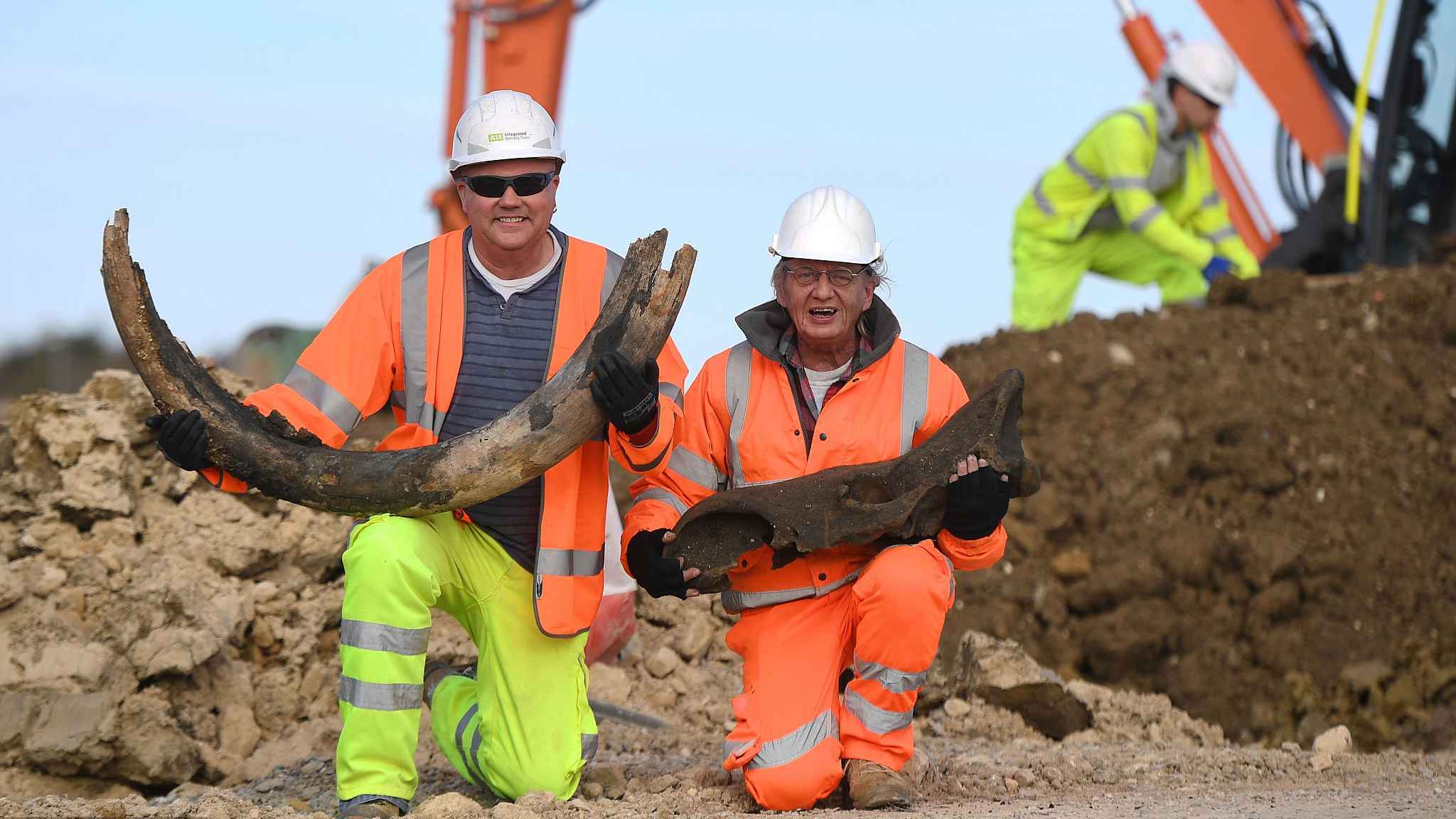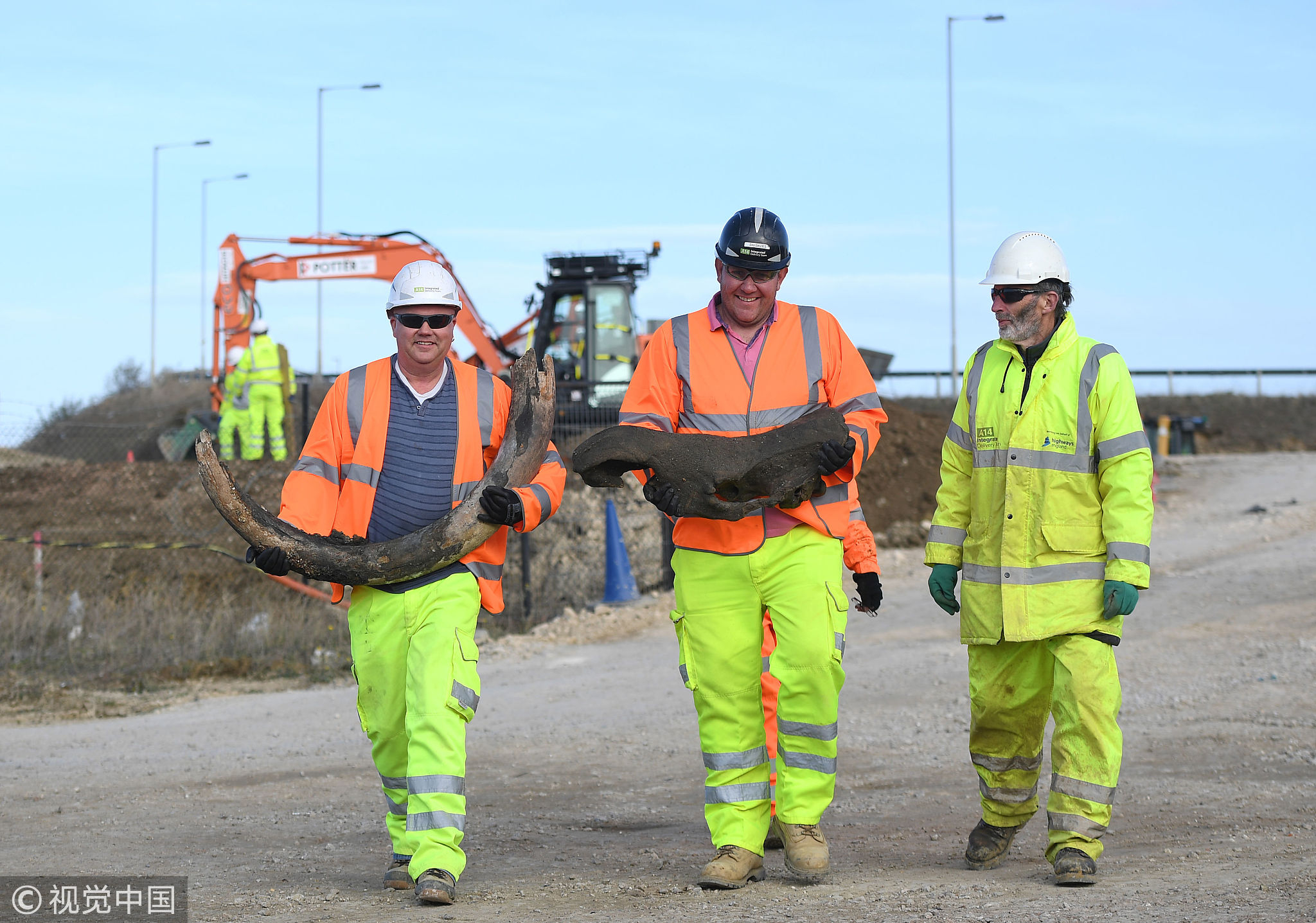
Culture
20:41, 25-Oct-2018
Ice Age mammoths discovered on Cambridge road building site
Updated
19:54, 28-Oct-2018
CGTN

The remains of woolly mammoths from the ice age have been found on a road construction site near the English university city of Cambridge, Highways England said on Wednesday.
Highways England experts, working alongside archaeologists on the Cambridge to Huntingdon road scheme, discovered the partial remains of a woolly mammoth and woolly rhino, both at least 100,000 years old, during excavations for construction materials in what was once an ancient river.
They are the latest in a series of fantastic finds from the team building the new road, due to open in December 2020, with other remarkable discoveries including Prehistoric Henges, Iron Age settlements, Roman pottery kilns, three Anglo-Saxon villages, and a deserted medieval village.
Highways England Cultural Heritage project leader, Dr. Steve Sherlock said: "These discoveries are just the latest in a line of amazing finds that the team has unearthed since this work begun at the end of 2016. All of these finds are the testament to the rich history of the region and in particular this local area around the A14 in Cambridgeshire."

(L-R) Excavator machine operator Darren Hickman, site foreman Dai Davies and archeology lead for the A14 project Dr. Stephen Sherlock, with the tusk of a woolly mammoth and the skull of a rhino, which were found between Cambridge and Huntingdon in UK, October 23, 2018. /VCG Photo
(L-R) Excavator machine operator Darren Hickman, site foreman Dai Davies and archeology lead for the A14 project Dr. Stephen Sherlock, with the tusk of a woolly mammoth and the skull of a rhino, which were found between Cambridge and Huntingdon in UK, October 23, 2018. /VCG Photo
Sherlock said it was crucial the evidence was recorded so it can be seen and understood by future generations.
"Seeing the remains of these extinct animals really brings to life what was happening over a hundred thousand years ago," said Sherlock.
Both the woolly mammoth and woolly rhino were alive during the last Ice Age, the Pleistocene Epoch, which began about 2.6 million years ago and ended around 9,700 BC. This period was a time when the climate oscillated between cold glacial conditions with vast glaciers and warm temperate interglacial environments with animals such as hippopotamus foraging along the banks of the famous River Thames.
Dr. Bill Boismier, a consultant Palaeolithic archaeologist for MOLA Headland, said: "The bones together with other environmental evidence surviving from the Ice Age such as plant remains, insects, and microscopic pollen grains from plants should help us create a picture of the floodplain environment at the time when these remains were deposited."
(Top Photo: Excavator machine operator Darren Hickman (L) and MOLA Headland archaeologist Bill Boismier(R) hold the tusk of a woolly mammoth and the skull of a rhino, unearthed from a construction site between Cambridge and Huntingdon in UK, October 23, 2018. /VCG Photo)
Source(s): Xinhua News Agency

SITEMAP
Copyright © 2018 CGTN. Beijing ICP prepared NO.16065310-3
Copyright © 2018 CGTN. Beijing ICP prepared NO.16065310-3